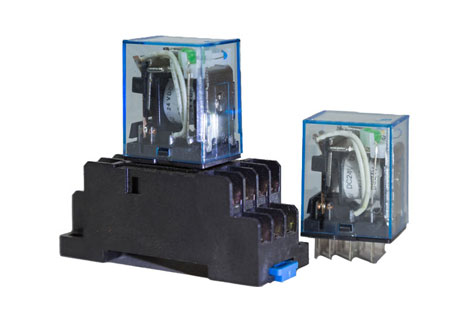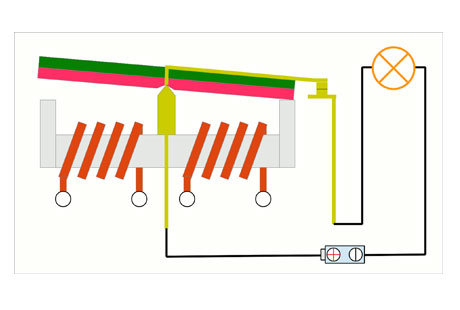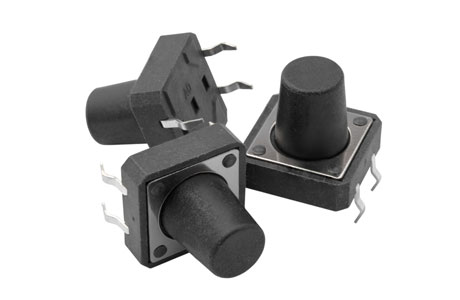
What is a Relay and its Working Principle?
Have you ever wondered how complex industrial machines manage to function with such precision and reliability? Ever thought about how big machines turn on with just a simple switch? That’s where relays come in.
In this blog, we’re explaining the world of relays, exploring their definition, and working principles, and why these relays are crucial in industrial engineering. Are you ready to unlock the knowledge that can elevate your engineering skills? By the end of this blog, you’ll have a clear understanding of what relays are, how they work, and why they’re crucial in your field.
What is a Relay?
Relays are integral components in industrial engineering, serving as electromechanical switches. They operate by using an electrical signal to control an electromagnet, which in turn connects or disconnects two circuits. This functionality makes relays versatile in various Industrial applications.
Unlike a standard manual switch that we might use to turn a light on or off, a relay is designed to control the connection and disconnection of two circuits electronically. This is achieved through an electromagnet, which is the heart of the relay. When an electrical signal is sent to the relay, it activates the electromagnet, which in turn either makes or breaks a circuit connection.
The internal structure of a relay is fascinating and consists of several key components. The electromagnet is formed by winding a copper coil around a metal core. When current flows through this coil, it generates a magnetic field. This field is what drives the relay’s operation. Attached to the electromagnet is a mechanically movable contact. This contact moves in response to the magnetic field, opening or closing the electrical circuit. The relay also includes switching points, which are the contacts that the movable arm connects to, completing or interrupting the circuit.
Relays are designed with different types of contacts to suit various needs. The ‘Normally Open’ (NO) contact, for instance, keeps the circuit open when the relay is inactive, closing only when the relay is energized. Conversely, the ‘Normally Closed’ (NC) contact does the opposite, keeping the circuit closed when the relay is inactive and opening it when activated. The ‘Common’ (COM) contact acts as a pivot point, connecting to either the NO or NC contact depending on the relay’s state.
There are several types of relays, each tailored for specific applications. Electromechanical relays, which are widely used, are known for their reliability and are particularly suitable for controlling high ampere loads. Solid State Relays (SSRs), on the other hand, use semiconductor devices to switch circuits.
Relays can be used in both AC and DC circuits, but their design differs slightly to accommodate the characteristics of each type of current. In AC relays, special mechanisms are employed to ensure continuous magnetism and prevent the relay coil from getting demagnetized at every zero-current point. This design consideration is crucial for maintaining the reliability and efficiency of the relay in alternating current applications.
Importance in Electrical Systems
Consider the role of a relay as a facilitator of safety and efficiency. In industrial settings, where controlling large machines and processes is everyday work, relays are necessary. They offer a means to automate processes, enhance safety by controlling high-voltage circuits remotely, and protect equipment from electrical faults.
Working Principle of Relay
Electromagnetic Attraction and Operation
The heart of a relay’s operation lies in electromagnetic attraction. When an electrical current flows through the relay’s coil, it generates a magnetic field. This field acts upon an armature, a type of lever, which moves to open or close the circuit. It’s a dance of attraction and repulsion, governed by the laws of electromagnetism.
How Relays Open or Close Electrical Circuits
Imagine you’re using a remote to turn on a light. The relay in this scenario acts as the intermediary, receiving a low-power signal from the remote (like pressing a button) and then, as if by magic, enabling or cutting off the high-power circuit to the light. This is the relay at work, making or breaking connections based on received signals.
Construction of Relays
Components: Contacts, Electromagnet, Armature, Spring
A relay is akin to a small mechanical puzzle, consisting of several key components. The contacts act as the gatekeepers, opening or closing the electrical path. The electromagnet is the trigger, activated by an electrical current. The armature is the moving part, influenced by the magnet, and the spring brings the armature back to its resting state when the current ceases.
Design and Assembly of These Components
In assembling a relay, precision is key. The electromagnet must be positioned so that its magnetic field effectively influences the armature. The contacts need to be made of materials that can handle the electrical load and minimize wear. The spring must have just the right tension to ensure reliable operation.

Relay Contact Types
Single Pole Single Throw (SPST)
The SPST relay is the simplest form, like a basic on-off switch. It has one input (pole) and one output (throw). When activated, it connects the circuit; when not, it breaks the connection. It’s straightforward and effective.
Single Pole Double Throw (SPDT)
The SPDT relay is more versatile. It has one input but two outputs. This allows it to not just open or close a circuit but also to switch between two different circuits. It’s like a railway switch, directing the train (current) onto one of two tracks.
Double Pole Single Throw (DPST)
Imagine a drawbridge with two lanes. The DPST relay can open or close both lanes simultaneously. It has two inputs and one output per input. It’s used when you need to control two circuits at the same time, in the same way.
Double Pole Double Throw (DPDT)
The DPDT relay is the most flexible of the bunch. With two inputs and two outputs for each input, it can control multiple circuits, switching between different states. It’s like having two SPDT relays in one package, offering a range of control options.
Conclusion:
Relays are pivotal in industrial engineering, offering control, efficiency, and versatility. Their evolution from simple electromagnetic devices to sophisticated components reflects the advancements in industrial technology. Understanding the working principle of the relay, particularly the role of electromagnetic attraction and the concept of poles and throws is essential for any industrial engineer looking to harness the full potential of relay technology in their applications.



